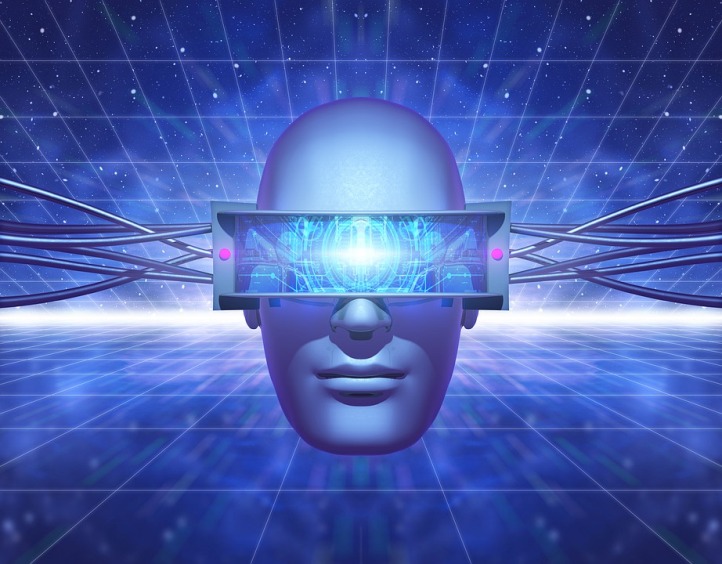Industrial artificial vision is one of the technologies that makes a difference in certain essential tasks in industrial production and can be said to be part of Artificial Intelligence. These machine vision systems make it easier for their owners to solve in industrial phases as decisive as quality controls or the detection of defective products.
What is an artificial vision system?
An artificial vision system is a combination of hardware and software that has the ability to capture and process data in images. Currently, machine vision systems are able to offer high precision, high consistency and high mechanical and thermal stability.
Artificial vision systems are usually composed of a set of digital sensors inserted into industrial cameras capable of delivering images and data.
The software can process, analyze and measure different data that serves engineers to monitor processes and make sound decisions.
A simple way to understand this system is to build on our own senses. Humans use our eyes to understand the world around us, and artificial vision tries to produce that same effect on machines. They may perceive and understand an image or sequence of images and act as appropriate in a given situation. Understanding on devices is achieved through a decomposition of the image into small fragments (pixels) and in its subsequent study.
These systems are one of the industrial technological resources in which a greater number of advances have been developed in recent years.
With artificial vision you can
- Pick & place: Thanks to its 2D and 3D orientation vision systems can help to perform perfectly without human help the tasks of collecting and placing products in a fast and effective way.
- Packaging and palletizing: its positioning and guidance tools allow robotic arms to calculate and package with the utmost precision to the highest standards.
- Quality control: this is undoubtedly one of the most important applications of artificial vision. They are able to ensure product traceability and detect failures. In addition, thanks to specialized artificial vision software, decisions such as ejecting an object from the production line can be made if it does not meet quality standards.
- Mounting: To increase accuracy and repeatability on assembly lines, artifice vision systems are one of the most effective tools.
- In the field of feeding, to discover foreign particles introduced into food handling. Although metal detectors help separate metal fragments, they are not effective in identifying plastics and other foreign objects.
- The use of plastics, from conveyor belts to latex gloves, is becoming more frequent, aggravating contamination by these materials and is a constant concern in the processing of these products, as this contamination can have very serious consequences: among them, the removal of large remittances of a product for fear of more contamination or the firm’s own commercial smear.
Kinds of artificial vision systems
Artificial vision systems can be classified into three types: vision sensors, smart cameras, and advanced machine vision systems
Vision sensors
They are more complex and have a higher price than classic photoelectric sensors, but they also have fewer features than smart cameras, or those vision systems based on the use of a Pc. In addition, while vision systems provide specific data, vision sensors only give step or failure results.
Smart cameras
They are the most advanced technology in relation to vision sensors and stand out for their computing power – able to solve any need for industrial vision-, image resolution and easy installation. This makes it easy for your applications to be very varied, regardless of activity or phase of the production chain.
Its most innovative aspect lies in its processing capacity, which provides storage and availability to connect with other automated systems, thanks to the input and output mechanisms.
For integrated vision systems, the camera sensor and memory are located in a very small remote head. The processor is also located remotely, facilitating connectivity and handling of the elements.
Advanced machine vision systems
They are very similar to integrated vision systems, but have more sophisticated and complete hardware, which improves software and data processing functions.
Its application is designed for more complex automated technologies and machines, so in many cases this system is required to be implemented during the manufacture of the machinery.
Applications of artificial vision systems
Artificial vision systems have very varied applications adaptable to the different industrial sectors and to the different needs of each production line. Some of the sectors where this technology has great potential are as follows:
Automotive: in this sector the use of vision systems is fundamentally related to inspection tasks in the manufacture and assembly of all vehicle parts.
Agri-food sector: industrial artificial vision is a very useful element in agri-food quality control tasks, especially in the final stages.
Electronics: the electronics sector is one of the most benefited by vision applications in its manufacturing processes. The handling and identification of the various electronic components are at your own risk.
Logistics and detection: all industries require logistics processes from each of the parts and products involved in their work.
Why bet on Artificial Vision?
Elimination of Subjectivity in Inspection
By introducing repetitive and automatable duty cycles, offering repeatability and quantifiable and time-maintained performances.
Flexibility of Production Processes
The very essence of Artificial Vision solutions allows their adaptability and scalability to adapt to the increasingly changing production processes. In many cases, for example, a single Artificial Vision system can be modified to inspect different products, thus making production changes more flexible.
Affordable Control Technologies
Vision technology can already be defined as an understandable, mature and affordable technology. The integration of these systems is based on a wide range of optical, electronic and computer components that allow intelligent systems to be configured with a clear return on investment, on time and in costs.

